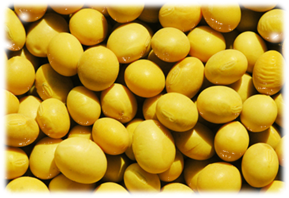PLOS ONE:华南农大描述镉胁迫下大豆miRNA与其靶基因应答机制
来自华南农业大学的年海教授和杨存义教授领衔的课题组对大豆中参与镉应激反应的miRNA进行了研究,并比较了它们在不同基因型大豆中的表达模式差异。相关文章发表于2013年12月10日的《PLoS ONE》杂志上。

PLOS ONE:华南农大描述镉胁迫下大豆miRNA与其靶基因应答机制
土壤中的重金属污染是一个世界范围内严重的环境问题,主要是由于一些人为活动,如采矿,工业活动和有机磷的使用等造成。土壤中镉(Cd)可以很容易地被植物吸收,从而导致各种中毒症状,如降低生物量,叶片失绿,抑制根系生长,发生形态学改变,甚至植株死亡。
大量研究表明,在植物中,micrornA(miRNA)参与了众多至关重要的生理过程,包括发育调控、信号传导、和胁迫应激。miRNA对于植物的重金属胁迫应激反应非常重要。大豆(Glycine max)是全球最重要的农业作物之一,土壤中的镉污染影响大豆种子的产量和质量。
为此,研究人员采用一个包含953个特异探针的定制的μParaflo®微流体芯片,鉴定了经镉处理和未处理的HX3(镉耐受型)和ZH24(镉敏感型)大豆株系中miRNA表达模式的差异。总共鉴定出26个与镉应激相关的miRNA,其中有9个miRNA在两个品种中均有发现,有5个和12个miRNA分别在HX3和ZH24中特异表达。通过qRT-PCR对其中16个miRNA进行验证,发现大多数miRNA具有与芯片检测结果相似的表达模式。
为了筛查miRNA调控的靶基因,研究人员利用降解组测序并结合生物信息学分析,从上述4个样本混合的降解组文库中鉴定到204个miRNA的376个靶基因。发现其中有55个靶基因被14个镉应激相关的miRNA剪切。GO注释表明,这些靶基因参与了广泛的生物学过程。研究人员通过qRT-PCR对其中10个靶基因的表达谱进行了验证。
本研究详细描述了镉胁迫下大豆miRNA与其靶基因的应答机制,提供了一个更好地理解植物重金属耐受性分子机制的框架。
原文摘要:
Identification and Comparative Analysis of Cadmium Tolerance-Associated miRNAs and Their Targets in Two Soybean Genotypes
Xiaolong Fang, Yunyun Zhao, Qibin Ma, Yian Huang, Peng Wang, Jie Zhang, Hai Nian, Cunyi Yang
lMicroRNAs (miRNAs) play crucial roles in regulating the expression of various stress responses genes in plants. To investigate soybean (Glycine max) miRNAs involved in the response to cadmium (Cd), microarrays containing 953 unique miRNA probes were employed to identify differences in the expression patterns of the miRNAs between different genotypes, Huaxia3 (HX3, Cd-tolerant) and Zhonghuang24 (ZH24, Cd-sensitive). Twenty six Cd-responsive miRNAs were identified in total. Among them, nine were detected in both cultivars, while five were expressed only in HX3 and 12 were only in ZH24. The expression of 16 miRNAs was tested by qRT-PCR and most of the identified miRNAs were found to have similar expression patterns with microarray. Three hundred and seventy six target genes were identified for 204 miRNAs from a mixture degradome library, which was constructed from the root of HX3 and ZH24 with or without Cd treatment. Fifty five genes were identified to be cleaved by 14 Cd-responsive miRNAs. Gene ontology (GO) annotations showed that these target transcripts are implicated in a broad range of biological processes. In addition, the expression patterns of ten target genes were validated by qRT-PCR. The characterization of the miRNAs and the associated target genes in response to Cd exposure provides a framework for understanding the molecular mechanism of heavy metal tolerance in plants.

